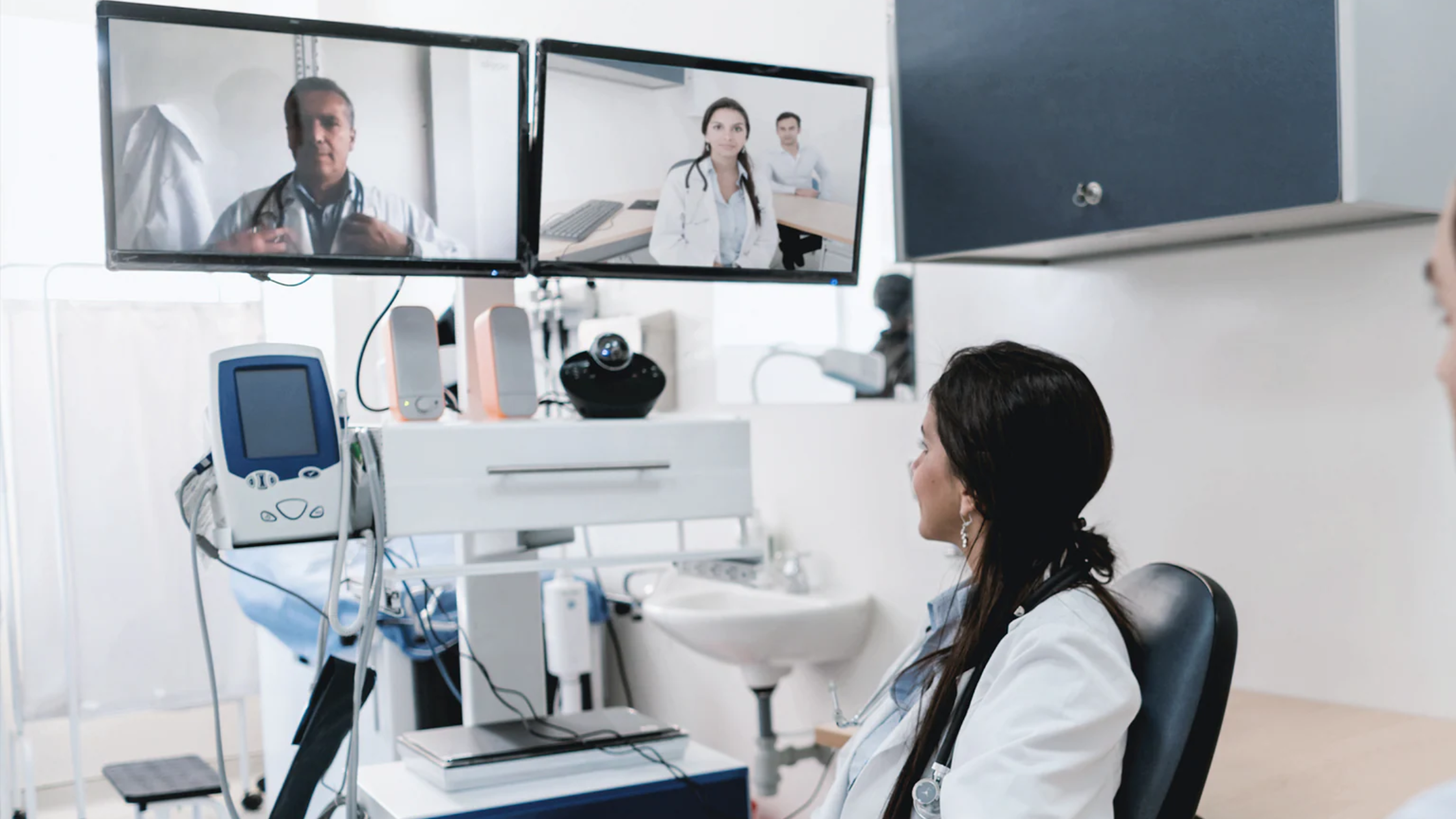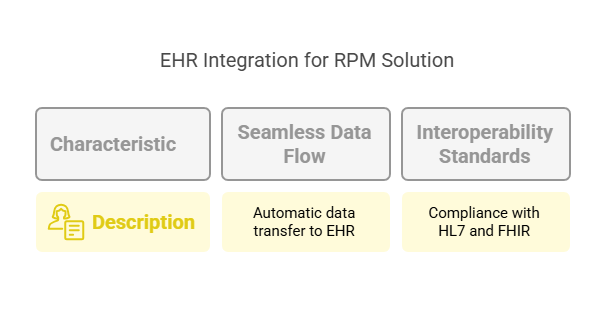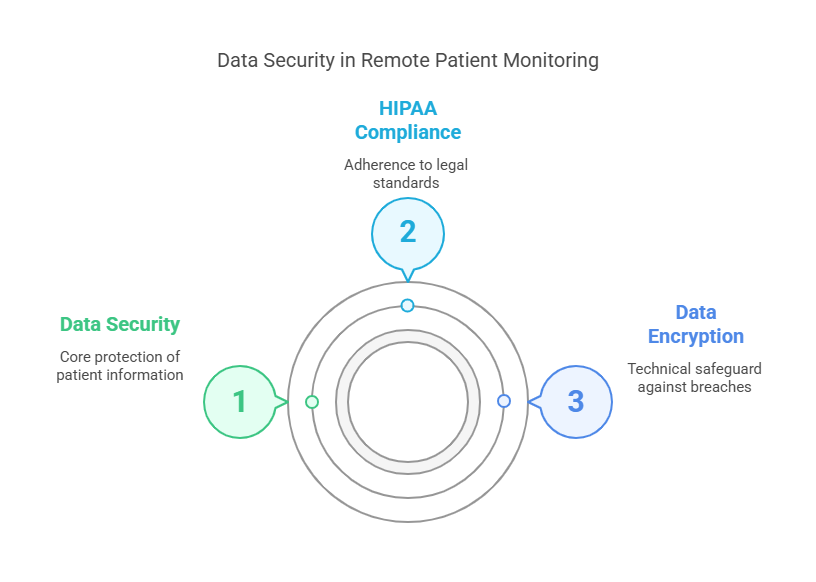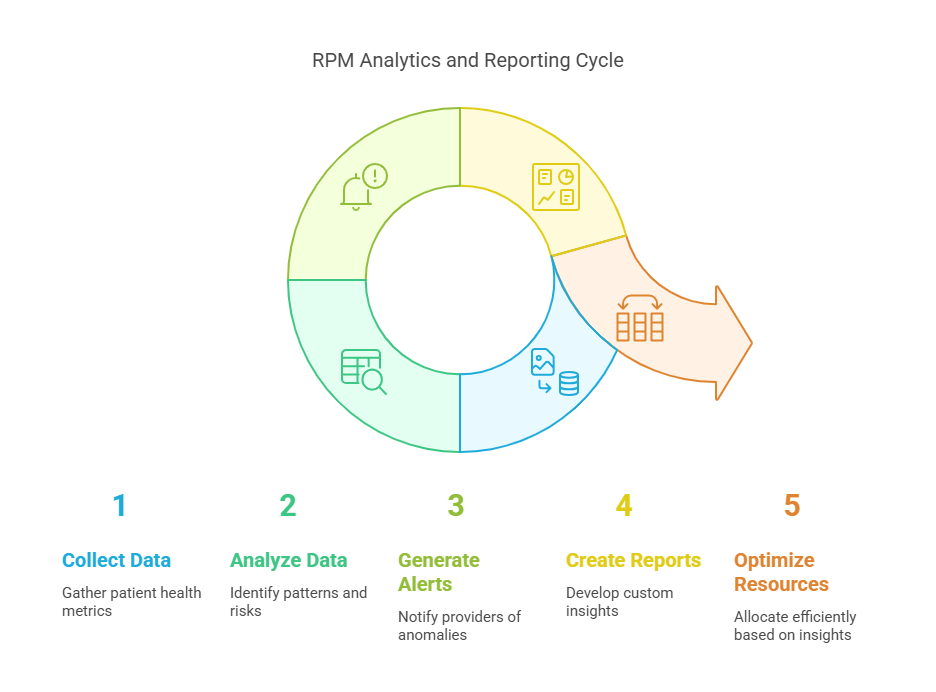How to Choose a Remote Monitoring Provider for Your Clinic?
In 2025, remote patient monitoring (RPM) has become an essential component of modern healthcare, especially for clinics aiming to enhance patient care, reduce hospital readmissions, and optimize operational efficiency. Selecting the right RPM provider is crucial to achieving these goals. This comprehensive guide will walk you through the key features to look for, critical questions to ask vendors, and an analysis of pricing models to help you make an informed decision.
Key Features to Look For
Selecting a remote patient monitoring (RPM) provider is not just about the technology—it’s about how that technology works for your team and your patients. The following five feature categories are critical to ensure smooth implementation, optimal patient care, and long-term success.
1. EHR Integration
Your clinic likely already uses an Electronic Health Record (EHR) system to store and manage patient data. The RPM solution you choose must work in tandem with your EHR to streamline workflows and reduce duplication of effort.
Seamless Data Flow:
An RPM platform should automatically transfer data collected from remote devices—such as heart rate, blood glucose levels, or blood pressure—into your existing EHR system. This integration allows providers to view real-time data within a single dashboard, improving decision-making and saving time.Interoperability Standards (HL7, FHIR):
Ensure the RPM vendor complies with recognized health data standards like HL7 (Health Level 7) and FHIR (Fast Healthcare Interoperability Resources). These standards ensure that the data formats are compatible and can be securely shared across different platforms and devices.
📝 Example: A clinic using Epic or Cerner EHR should look for RPM platforms that offer plug-and-play integration or APIs designed specifically for those systems.
2. Device Compatibility and Variety
Different patients have different health conditions, and a one-size-fits-all device approach won’t cut it. Your RPM provider should support a wide range of medical-grade monitoring devices.
Range of Devices:
Look for providers that offer FDA-cleared or CE-marked devices such as:Blood pressure monitors
Pulse oximeters
Weight scales
ECGs
Thermometers
Continuous glucose monitors (CGMs)
The broader the range, the more adaptable the platform is to different patient demographics.
Ease of Use:
Devices must be simple enough for elderly or non-tech-savvy patients to use at home. Features like large digital displays, voice prompts, Bluetooth auto-sync, and one-touch operation can improve user experience and patient compliance.
💡 Pro Tip: Ask vendors if the devices require setup or calibration on-site or if they're ready out of the box.
Related Blog: Wearables vs. Professional Medical Monitoring Systems
3. Data Security and Compliance
RPM involves collecting sensitive health data outside the clinic. Ensuring that this data is secure and handled according to industry regulations is non-negotiable.
HIPAA Compliance:
Any provider handling patient data in the U.S. must comply with the Health Insurance Portability and Accountability Act (HIPAA). This includes strict guidelines on how patient data is collected, stored, shared, and accessed.Data Encryption:
Ensure the platform offers end-to-end encryption for data at rest and in transit. This minimizes the risk of data breaches and unauthorized access.
🔐 What to ask vendors:
"How is patient data encrypted on your platform, and how do you handle role-based access for different users (e.g., doctors, nurses, admin staff)?"
Related Blog: Is Remote Monitoring Safe? Data Security in Healthcare Devices
4. Patient Engagement Tools
RPM systems are only effective if patients are actively participating. Strong engagement tools empower patients, encourage compliance, and ultimately improve health outcomes.
Mobile Applications:
A dedicated app can act as a central hub where patients can:Track their own readings
Receive reminders to take their vitals
Communicate with healthcare providers
Access care plans or medications
Ideally, the app should be compatible with both Android and iOS devices.
Educational Content:
Providers should offer or link to health education resources like:Tutorials on how to use devices
Information on disease management
Lifestyle tips for chronic care patients
📲 Why it helps: Education improves self-care. Informed patients are more likely to stick to monitoring schedules and less likely to make avoidable emergency visits.
5. Analytics and Reporting
The goal of RPM is to turn raw data into actionable insights. Analytics tools allow providers to detect patterns, assess risk, and intervene early.
Real-Time Monitoring:
The system should alert you immediately when a patient’s readings fall outside a predefined range. For example, an alert can be triggered when a patient’s blood pressure spikes suddenly, allowing you to contact them before a serious event occurs.Customizable Reports:
The ability to create custom dashboards or reports based on patient population, chronic conditions, or compliance trends helps:Track performance for quality assurance
Comply with CMS and insurance billing guidelines
Optimize resource allocation
📊 Use case: A diabetes-focused clinic may want monthly reports showing blood glucose trends across all monitored patients, along with alerts for anyone out of range for more than 3 consecutive days.
Questions to Ask Vendors
Asking the right questions can help you assess whether a vendor is the right fit for your clinic.
1. What is your implementation and training process?
Onboarding Support: Inquire about the support provided during the onboarding phase.
Training Resources: Ask if they offer training materials or sessions for your staff.
2. How do you handle data privacy and security?
Compliance Certifications: Request information on compliance with HIPAA and other relevant standards.
Security Measures: Ask about the specific security protocols in place to protect patient data.
3. Can your system integrate with our existing EHR?
Integration Capabilities: Confirm whether the RPM system can integrate with your current EHR.
Customization Options: Inquire about the flexibility to customize the integration to fit your workflows.
4. What kind of technical support do you offer?
Availability: Determine the availability of technical support (e.g., 24/7 support).
Support Channels: Ask about the channels through which support is provided (e.g., phone, email, chat).
5. What are your pricing models?
Cost Structure: Understand whether they offer subscription-based pricing, one-time fees, or a hybrid model.
Additional Costs: Inquire about any additional costs for devices, maintenance, or support services.
Pricing Models: Subscription vs. One-Time
Understanding the pricing structure is crucial for budgeting and financial planning.
Subscription-Based Model
Pros:
Lower initial investment.
Ongoing support and updates included.
Cons:
Long-term costs may be higher.
Potential for vendor lock-in.
One-Time Purchase Model
Pros:
Higher upfront cost but potentially lower long-term expenses.
Greater control over the system.
Cons:
May require additional investment for updates and support.
Responsibility for maintenance falls on your clinic.
10 Lesser-Known Facts About Remote Patient Monitoring
Improved Chronic Disease Management: RPM has been shown to significantly improve management of chronic diseases like hypertension and diabetes. (Source)
Reduced Hospital Readmissions: Studies indicate that RPM can reduce hospital readmissions by up to 50% in some cases. (Source)
Enhanced Patient Satisfaction: Patients report higher satisfaction levels due to the convenience and proactive care facilitated by RPM.
Cost Savings: Clinics can achieve substantial cost savings through reduced hospitalizations and emergency visits.
Data-Driven Insights: RPM provides valuable data that can inform population health strategies.
Increased Staff Efficiency: Automation of routine monitoring tasks allows staff to focus on more critical patient care activities.
Scalability: RPM systems can be scaled to accommodate growing patient populations without significant additional investment.
Integration with Telehealth: RPM complements telehealth services, providing a comprehensive virtual care solution.
Regulatory Support: Regulatory bodies are increasingly supporting RPM through favorable reimbursement policies.
Patient Empowerment: Access to real-time health data empowers patients to take an active role in their health management.
Explore Courses for Clinical Research Career
Courses Available:
Conclusion
Choosing the right remote monitoring provider is a strategic decision that can significantly impact your clinic's efficiency and patient care quality. By focusing on key features, asking the right questions, and understanding the pricing models, you can select a provider that aligns with your clinic's goals and resources. As you navigate this decision, consider partnering with CCRPS, a leader in healthcare solutions, to support your RPM implementation and ensure success in your remote patient monitoring initiatives.
Frequently Asked Questions (FAQs)
-
RPM involves the use of digital technologies to collect health data from patients in one location and electronically transmit it to healthcare providers in a different location for assessment and recommendations.
-
While RPM is beneficial for many, it is particularly effective for patients with chronic conditions, those requiring post-discharge monitoring, and individuals in remote areas.
-
By enabling continuous monitoring, RPM allows for early detection of potential health issues, timely interventions, and personalized care plans, leading to improved outcomes.
-
Challenges include ensuring patient compliance, integrating with existing systems, managing data privacy, and securing reimbursement from payers.






